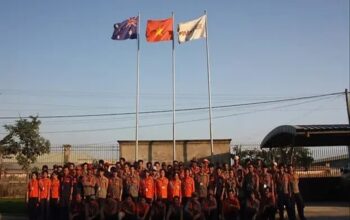The below article is written by GJS Puri.
Before stepping into the topic, we will first understand the definition of Least Count.
Definition of Least Count
Simply, it is define as the smallest accurate value that any measuring instrument can measure.It is also called Resolution.
In context to Profile Projectors, the least count or resolution depends on X-Y Digital inbuilt counters. These inbuilt counter take a reading from the stage when it moves in X & Y direction. Most of the Profile Projectors X-Y stage use glass scales and some linear encoders to resolve the resolution for Profile Projectors.
Resolution or Least of Profile Projector
In general, the least count of Profile Projector is 0.001mm or 1 microns. In some Make, the least count is more better i.e 0.0001mm or 0.1 microns.
Please note that the above least count is the minimum reading which we can measure through inbuilt Digital X-Y counters. Kindly don’t compare with software counters as it may go to any decimal place. Actual Resolution or least count is defined by Profile Projectors inbuilt digital counters which are further connected with the X-Y stage.
Secondly, the Least count or Resolution totally depends upon the glass scales and encoders. So, the least count or resolution of Profile Projector is directly dependent on OEM Manufactures as how accurately they are resolving their X-Y stage movement.
In addition to the above, we would also like to explain the concept of erect image and reversed image in Profile Projector or Optical Comparator.
Profile Projectors are a non-contact measuring instrument that uses the lens to magnify the object. Thus, the image of the magnified object can be easily seen on the protractor screen.
Now, some OEM manufacturers provide the shadow image erect or unreversed and some will provide reversed image.
So, lets find out what is Erect and reversed image in Profile Projector.
Erect Image
Suppose, we have placed the object on the X-Y Stage. If the shadow of an image is oriented the same way as the object is placed on the X-Y stage. It called an Erect Image or Unreversed image.
In addition to the above, the left side of an object will be the same as the left side of the Shadow image. Further, this will be the same for the right side, top side, and bottom side of an image.
Reversed Image
Suppose, we have placed the object on the X-Y Stage. If the shadow of an object which is placed on the X-Y stage is the opposite. It called Reversed Image. This means, that the left side of an object which is placed at the X-Y stage will be shown as the right side in the projection screen of Profile Projector.
Further, the right side of an object placed on the X-Y stage will be shown as the left side on the projection screen. The same follows to the top side and bottom side of an object. It will be projected onto the projection screen as the bottom side and top side respectively.
X-Y Stage in Profile Projector
It is the part of Profile Projector, where we keep an object or component. As Profile Projectors is 2 D instrument, we have only 2 Axis for measurement and movement i.e. X & Y.
These X-Y Stages are very important to select Profile Projectors. An end-user should select the X-Y stage depending upon their sample range. Some commonly X-Y stage ranges are:
- 50 x 50 mm
- 100 x 100 mm
- 150 x 100 mm
- 200 x 100 mm
- 200 x 150 mm
- 250 x 150 mm
- 250 x 200 mm……….
Actual X-Y range depends upon the OEM Manufacturer .
I Hope, now we have understood the concept of Least Count or Resolution in Profile Projector. We have also gone through the concept of erect, reversed images, and various range of X-Y stages.









